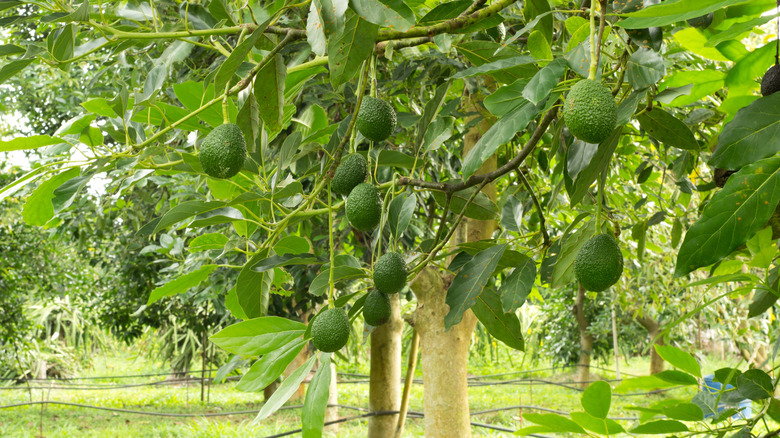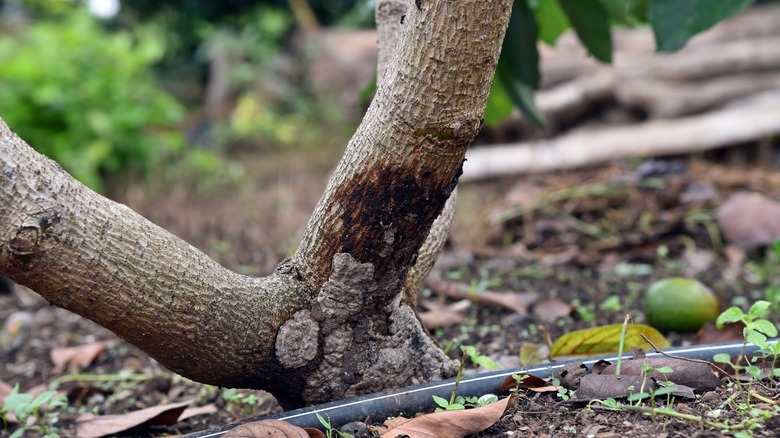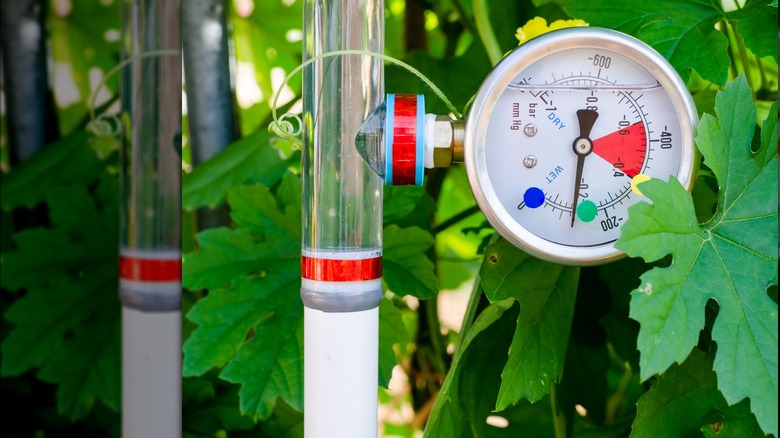Avoiding This Mistake May Keep Your Avocado Trees Safe From Root Rot
The maxim "right place, right time, right quantity" rings true for avocado trees (Persea americana). Generally easy to care for, these pre-Columbian era finds are highly susceptible to contracting Phytophthora root rot — a vicious disease that causes defoliation and early demise — and your poor irrigation practices might have a role to play. Overwatering your avocado tree, thus leaving it with wet feet, is the perfect recipe to attract Phytophthora cinnamomi, the water mold responsible for root decay. Growing your fruit trees in deeply compacted soils, saline areas, or clay soils under three feet deep can exacerbate this issue even further.
In warm, waterlogged soils, the Phytophthora mold activates to form zoospores that eventually travel to the avocado trees' roots through the excess flowing water. Drawn in by the feeder roots' chemical and electrical releases, the spores quickly penetrate their tips and build germ walls, taking over within 72 hours. This action starves the trees of the necessary growth resources, including nutrients and water, causing them to wither away. Unfortunately, some gardeners misdiagnose the foliage's wilting as a consequence of inadequate watering, aggravating the disease further.
Recognizing root rot symptoms
To determine whether your avocado tree is suffering from Phytophthora root rot, examine its foliage, which will give the first visual cue for rot damage. Decaying trees usually sport small, discolored, yellowing leaves browning at their tips. The crown leaves and branches will go out first, exposing the undergrowth to the sun, leading to scalding and fruit loss. Eventually, the entire canopy will be reduced to a bare twig skeleton. Look for other signs of damage when you notice faded, lifeless, and sparse leaf growth or find your tree's base cluttered with dead leaves.
As avocado trees' rootlets prefer high oxygen, they will appear chocolate brown-black instead of creamy (as healthy feeder roots do) in soggy soils, indicating Phytophthora has taken root. With the rootlets' access to water and nutrients cut off by the mold, they become brittle and die down. In the worst cases, you might not find many feeder roots, as they'll have decomposed already. This root destruction will cause the avocado tree to perish within a few months, though it may take longer based on soil conditions and cultural practices. Counterintuitively, a declining avocado tree will also produce a higher volume of fruits, although they'll be shaped irregularly and smaller than usual.
Rectifying the mistake and controlling root rot
Planning appropriate irrigation schedules for avocado trees can be tricky since water requirements vastly vary based on soil type, climate variables, the tree's age and condition, evapotranspiration levels, and other factors. For instance, according to the University of California, a mature avocado needs roughly 2 inches of water weekly during the summer. In contrast, new plants only require between 2 and 5 gallons of water every five to 10 days to stimulate root establishment; the watering frequency reduces further after four months. Similarly, you'll need to irrigate more frequently in sandy soils than in clay soils. But if your trees show signs of rot, reduce their soaking — the diseased roots will have a harder time absorbing the water, worsening their decay. To plan better, install tensiometers and consult the California Irrigation Management Information System website for more exact measurements.
Another way to prevent overwatering is to install individual drip systems with their flows directed at the root ball, moving them at least 6 to 8 inches away from the tree's base a few months in. Reduce the output around distressed avocados and allow the soil to dry before watering again. An easy test is to place your hand on the soil; if it leaves an imprint, you can delay watering the tree. You can also avoid water accumulation by applying a 6-inch wide mulch layer or 15 pounds of gypsum per tree to improve drainage or moving the trees to mounds or berms.


